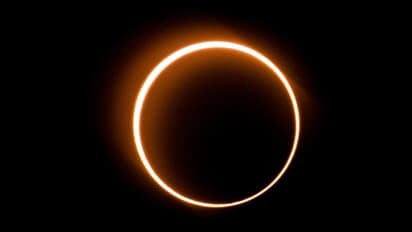Summer Solstice 2020: A look back at the longest day of what seems to be the longest year
Published : Jun 21, 2020, 10:28 PM IST
Earth hosted a rare type of solar eclipse this June 21 which coincided with the summer solstice, or the first day of summer.
Stay updated with the Breaking News Today and Latest News from across India and around the world. Get real-time updates, in-depth analysis, and comprehensive coverage of India News, World News, Indian Defence News, Kerala News, and Karnataka News. From politics to current affairs, follow every major story as it unfolds. Get real-time updates from IMD on major cities weather forecasts, including Rain alerts, Cyclone warnings, and temperature trends. Download the Asianet News Official App from the Android Play Store and iPhone App Store for accurate and timely news updates anytime, anywhere.
